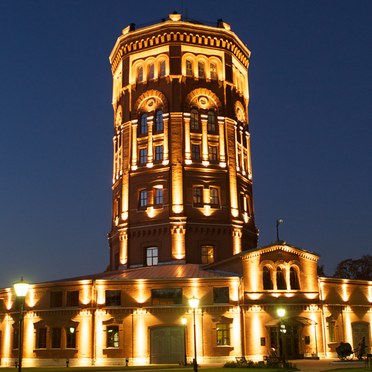俄罗斯圣彼得堡水博物馆
- Lamp efficacy
Lamp efficacy
Ensuring the lamp efficiently converts electricity into light (lm/W).
- Ballast classification
Ballast classification
Controlling the electricity supply to the lamp (Energy Efficiency Index).
- Luminaire distribution
Luminaire distribution
Controlling light emission using optics which bend and shape the light to the correct location.
- System efficacy
System efficacy
Combining optical and thermal control within the luminaire (luminaire lm/W).
- Presence/absence detection
Presence/absence detection
Presence: Lights automatically turn on/off with movement. Absence: Lights automatically turn off and must be manually switched on.
- Daylight detection
Daylight detection
Artificial lighting which responds to the natural light conditions.
- Constant illuminance
Constant illuminance
A function designed to produce correct light levels for the duration of the maintenance period.
- Task-scene setting
Task-scene setting
Allowing the user to set scenes and adapt the lighting to different tasks.
- Timed off
Timed off
Automatic cut-off can be installed to turn all lights off during unoccupied hours.
- Task lighting
Task lighting
Lighting task areas with the correct amount of light.
- Zoning of lighting
Zoning of lighting
Lighting is zoned according to area use.
- Maintenance schedule
Maintenance schedule
Maintenance must be performed in response to product age, performance and environment.
- Waste light
Waste light
Eliminating waste light which does not hit the intended target.
- Reflectance
Reflectance
Taking advantage of light which is reflected from the surface within the space.
- Visible smart metering
Visible smart metering
Results of actions can be quickly seen as increased or decreased energy use to encourage responsible energy consumption.
公共建筑物的照明有一种相当古老的做法,即通过一排排小灯具,照亮窗户或是勾勒主要建筑特征的轮廓。早在1650年,罗马的圣彼得大教堂就已采用这种照明方式:长方形廊柱式教堂布满火盆,以强化建筑物的美感。时至今日,这种照明方式略作修改后延续下来,且不像以前那么容易导致意外火灾。
Thorn索恩照明对圣彼得堡前身为水塔的建筑实施了一个虽小但很有效的方案,成就了卓越的照明典范。置于地面的Qba泛光灯采用70W和150W高压钠灯,突显19世纪砖墙的暖色调,它们外形紧凑、光束图案精准,因而便于安装,为游客带去灵感,展示魅力,同时还能减少干扰光。
该塔由当地供水公司Vodokanal为建造,曾标志了圣彼得堡集中供水的开端,如今则改建为独特的水博物馆。
该方案由SPb GUP“Lensvet”操刀设计,由LLC“Maltech”承包电器安装服务。

